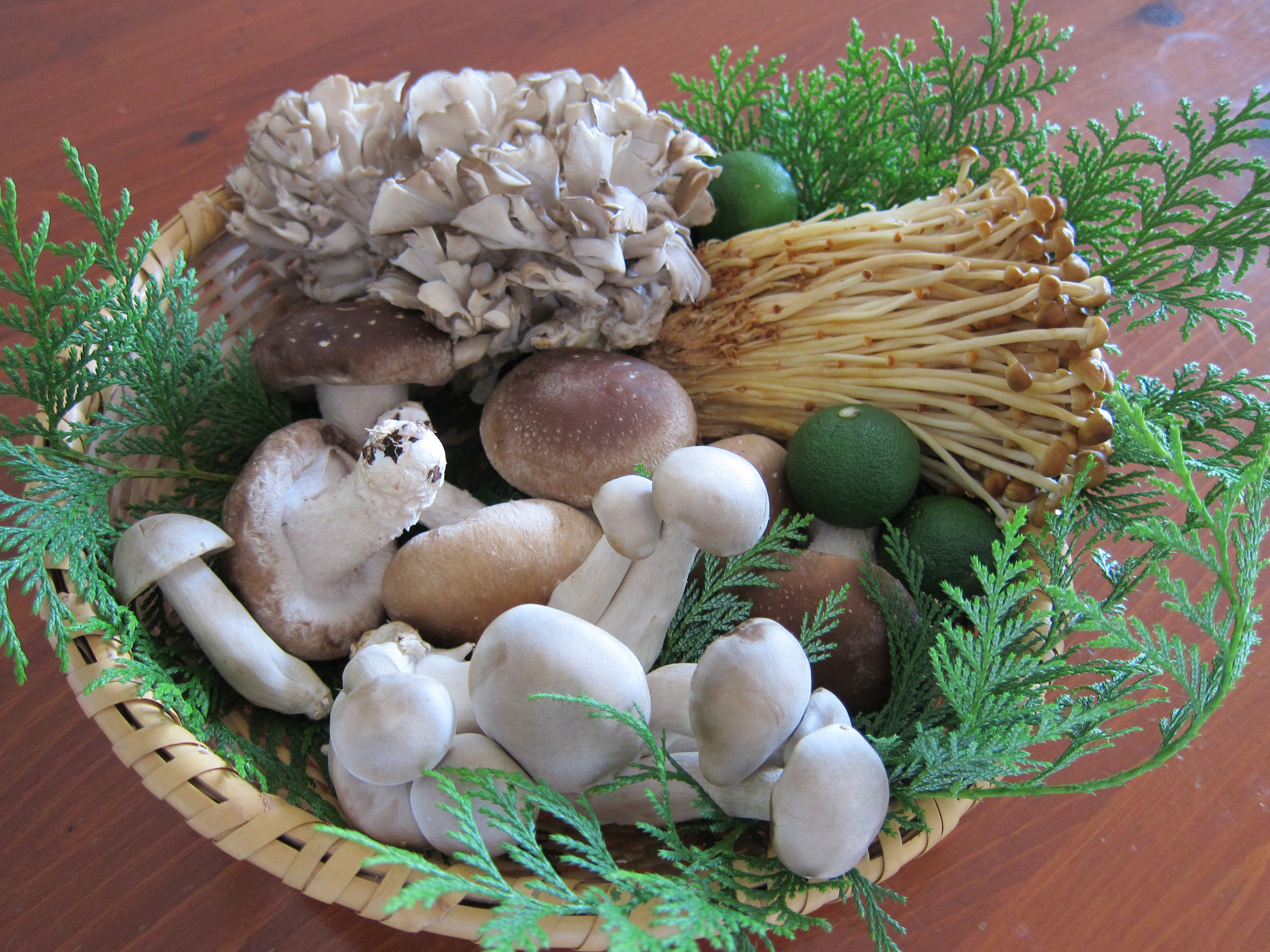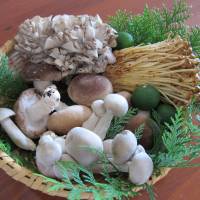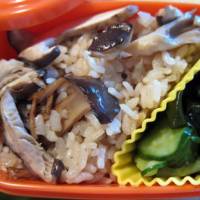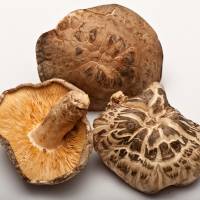Edible mushrooms are a feature of the fall season in temperate climates worldwide, and Japan is no exception. The humid climate lends itself to the growth of all kinds of fungi, so it's easy to assume that mushrooms (or kinoko in Japanese) of all kinds have been included in the daily meals of the Japanese people for a long time. Surprisingly though, this may not have been the case for the whole country.
The earliest prehistoric period of civilization in Japan is the Jomon period, which lasted from about 14000 BC to 300 BC. While it's possible that people foraged for mushrooms before and after this time, the only concrete evidence that mushrooms were consumed at all comes in the form of some mysterious clay objects. These objects, found only in archeological sites in the northernmost part of Honshu's Tohoku region and in the southern tip of Hokkaido, are amazingly accurate depictions of various types of mushrooms.
Made only during a period of about 500 years, from around 2000 BC to 1500 BC, there are several theories as to their use. But due to their realistic appearance, the most popular theory is that they were made as visual aids of mushroom varieties that were safe to eat — a guide for mushroom foragers, much like the photographic guides used today.
Mushrooms seem to have disappeared from the Japanese diet for a while after that, however. There's no mention of mushrooms in the cuisine of the Nara Period (710-794), for example. They only reappeared in the Heian Period (794-1185), when they seem to have been reintroduced to the Japanese menu via China. Some scholars theorize that the Yamato people who dominated the southern part of what is now mainland Japan simply did not become desperate enough to forage for fungi, which can be a dangerous undertaking, while the people of the north had far less choice in what they could eat.
In any case, by the Azuchi-Momoyama period (1568-1603), mushrooms were widely eaten. Toyotomi Hideyoshi, who rose up from very humble origins as a farmer's son to become the absolute ruler of the nation, was said to be so fond of mushrooms that they were on his table every day. In the Edo Period (1603-1868), mushroom hunting became very popular, especially amongst the ladies of the well-to-do merchant classes. Going to the satoyama — the countryside hills — with gathering baskets and bentō boxes in tow was a fashionable way to celebrate the coming of the fall season. The first attempts at cultivating mushrooms on cut logs were made during the Edo Period also.
These days of course, most mushrooms consumed in Japan are cultivated, either the traditional way on wooden logs or in sterile compost. (Wild-mushroom foraging is still popular, but if you would like to go looking for mushrooms yourself, be sure to go with an experienced and knowledgeable guide. Incidentally, mushroom foraging has been banned or restricted in Fukushima Prefecture and some surrounding regions this year; check with local authorities whether an area you plan to go to is safe.)
The one exception is matsutake, the wildly expensive mushroom that is as highly prized in Japan as the truffle is in Europe. Numerous attempts to cultivate matsutake have so far failed, and while these mushrooms are often imported from places such as China and the United States, domestically grown matsutake are held in much higher esteem.
Prices for matsutake vary by which region they come from; the most highly prized ones come from the Kyoto area, whose precious mushrooms can go for ¥50,000 per 100 grams and up.
If you can afford to buy matsutake, the best way to cook one is to simply wipe it carefully with a dampened cloth and then grill it on a heated stone. Matsutake often come packaged with a kaposu citrus or two; the bitter-sour juice is supposed to be a perfect match for the mushroom's delicate flavor.
Fortunately, there are plenty of other, much more affordable mushroom varieties to enjoy in Japan. The most popular is the shiitake (the take part actually means "mushroom"). Dried shiitake are a staple in any Japanese kitchen, where they are reconstituted and used in everything from soups to stir-fries; their concentrated flavor and meaty texture is quite different from the fresh kind.
Dried mushrooms are at their best at this time of year; look for firm, unbroken caps with well defined, bright yellow gills on the underside.
Another mushroom that is becoming better known outside of Japan recently is the white, stringy enoki, which are enjoyed for their texture rather than their flavor. They're a popular addition to hot pots such as sukiyaki, which are a fixture of fall and winter in Japanese homes.
Shimeji come either with medium-brown, light-brown or white caps. They are less pronounced in flavor and fragrance than shiitake, making them quite versatile mushrooms. A tip: Since Western button mushrooms (which are, perhaps confusingly, known in Japan as masshurūmu) tend to be expensive in Japanese grocery stores, try substituting shimeji in any Western dish that calls for mushrooms.
And then there is the maitake, a mushroom that grows in big clumps. You may know it as hen-of-the-woods; an old-fashioned Japanese name for it is saru no koshikake, which means "monkey's stool." Maitake is most often eaten as tempura in Japan, though it can be used for stir-fries and so on.
One thing to watch out for with maitake is that it has an anticoagulating effect on proteins, which means that if you cook it with eggs in an omelette, the eggs may not set properly.
Another kind of mushroom that is very Japanese is the nameko. Nameko is usually sold canned or vacuum-packed, although you can find fresh nameko in some department store food halls. It has a natural viscous coating, rather like the stickiness of natto (fermented soy beans) but without the odor. Nameko is usually served in miso soup, and it's definitely something you either love or hate.
Other mushroom varieties that are eaten in Japan include kirurage, which means "wood jellyfish" and is also known as wood's ear or Chinese fungus; and eringi (trumpet mushroom), which was introduced to the Japanese market in the 1990s and is sometimes called "the poor man's matsutake." Western-cultivated button mushrooms are widely available too.
While Western methods for cooking mushrooms often call for the use of butter or oil, traditional Japanese methods usually rely on gentle grilling, steaming or stewing without the addition of fat. Since mushrooms are very low in calories to begin with, enjoying mushrooms in Japanese recipes may even help your waistline out a bit.
Makiko Itoh is the author of "The Just Bento Cookbook" (Kodansha International). She writes about bentō lunches at www.justbento.com and about Japanese cooking and more at www.justhungry.com.
An easy and tasty way to enjoy a bounty of mushrooms is to cook them with rice. Use whatever mushrooms you like, but I usually include some fresh shiitake and shimeji, plus a small handful of enoki for texture. The dashi (stock) is made with dried shiitake for even more mushroom flavor.
Serves 4
White rice — 300 grams (2 rice-cooker cups)
Dried shiitake — 2 large
Dried konbu seaweed — 1 15-cm-long piece
Cooking sake — 1 tbsp
Soy sauce — 2 tbsp
Mixed fresh mushrooms — 150 grams
At least an hour in advance or the night before, immerse the dried shiitake in enough cold water to cover. Add the piece of dried konbu, cover and leave in a cool place until the shiitake has softened. Take out the mushrooms and konbu, squeezing out the excess water, and reserve the soaking liquid. (You can save the konbu piece for another dashi if you wish.) Cut the stems off the reconstituted shiitake and slice the caps.
Rinse and drain the rice. Set aside.
Clean the fresh mushrooms and slice or shred into pieces. Keep the pieces fairly large — if you cut them up too small, they'll get lost in the rice after they are cooked. Mix in the sliced shiitake. Sprinkle the mixed mushrooms with the sake and soy sauce and mix gently with your hands.
Put the drained rice and the soaking liquid from the dried shiitake in the bowl of the rice cooker. Add enough water to meet the 2-cup measuring line if needed; if there's too much liquid, scoop some out. (If you are not using a rice cooker, use a ratio of 1 part rice to 1.25 liquid by volume.)
Add the mushrooms, including any liquid that may have come out of them, into the rice cooker. Cook as with regular rice. When done, mix the mushrooms into the rice with a rice paddle.
This rice is great served warm or cold, so it's delicious in bentō boxes, as shown here.




















With your current subscription plan you can comment on stories. However, before writing your first comment, please create a display name in the Profile section of your subscriber account page.